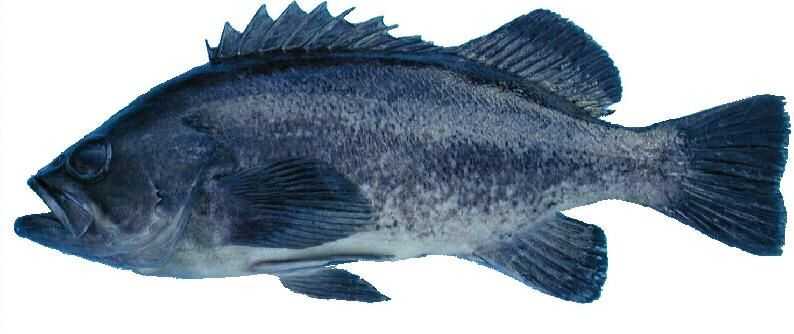Blue Rockfish

Species Details
Sebastes Mystinus
Sebastidae
Scorpaeniformes
Onshore, Offshore, Rocky, Reefs
8 lbs.
10" - 21"
Blue Rockfish (Sebastes Mystinus) Fish Description
The blue rockfish are distinct from other rockfish species in that they are more rounded in shape. Their colors can range from blue-black, greenish-blue, to gray, with some mottling. The stripes on their heads and their angular blotches are also distinct. They also have relatively small mouths compared to other rockfish. Their pectoral fins are large, while their dorsal fins are unmottled.
Adult blue rockfish are usually darker in their coloring, while juvenile blue rockfish have a lighter blue coloring, with distinct brick red zigzag spots.
The blue rockfish look similar to the black rockfish and deacon rockfish, but the easiest way for anglers to distinguish them from the other rockfish species is to look at their shape and the size of their mouths. The blue rockfish are always a little more oval and rounded compared to the two, and their mouths smaller.
Diet and Size
This fish species mostly feed on plankton. They can also digest algae quite well. Young blue rockfish consume tiny crustaceans. Mature ones feed on jellyfish, squids, other young rockfish, and gastropods.
The blue rockfish can grow up to 21 inches in length, the female being larger than the male. The world record for the blue rockfish is 23 inches and 8 pounds. The oldest recorded age for this fish is 44 years old.
Interesting Facts about Blue Rockfish
- When fishing for this species, be very careful about handling them as their dorsal and anal spines are venomous.
- They are nonmigratory fish and they are sometimes known to school with other rockfish species.
- Rockfish schools are also known for their habit of relocating within minutes, making them hard to pin down.
- The blue rockfish are a favorite among anglers, but their abundance has suffered in recent years due to overfishing.
- The main spawning season for the blue rockfish is from November to March. Similar to other rockfish species, the blue rockfish fertilize internally. The average female can release up to 525,000 pelagic eggs.
Blue Rockfish - Fishing Techniques
The blue rockfish is quite easy to catch with both lures and baits. The most important thing to achieve when rockfishing is to be able to locate the fish in the water, and once that’s done, anglers have to make sure that their baits or lures have enough weight to stay at the bottom.
For the lures, blue rockfish are known to bite octopus-type lures. Adding a squid to your lure will increase the attraction. For the baits, live anchovies or sardines will work best, but anglers can also work with dead ones.
The best season to catch this popular game fish is from March to December, as there is seasonal closure from January to February.
Blue rockfish, like other rockfish species, are susceptible to barotrauma when they are reeled in because they have swim bladders. So, when releasing fish that cannot be kept, it is advised that anglers should make them fit to survive before returning them to water. Anglers can do this by deflating their swim bladder with a needle before releasing them so they do not just end up floating around and dying.
Habitat and Distribution
The blue rockfish are a schooling fish species typically found over rocky reefs, kelp forests, and pinnacles, at depths up to 1,800 feet. They can also be found near the surface, over shallow reefs and kelp beds.
These fish species are mostly concentrated in the waters of central to southern California. They do occur off the coast of the Eastern Pacific, from Vancouver, British Columbia to Northern Baja California.






